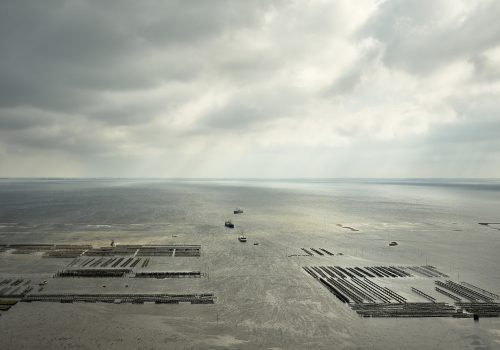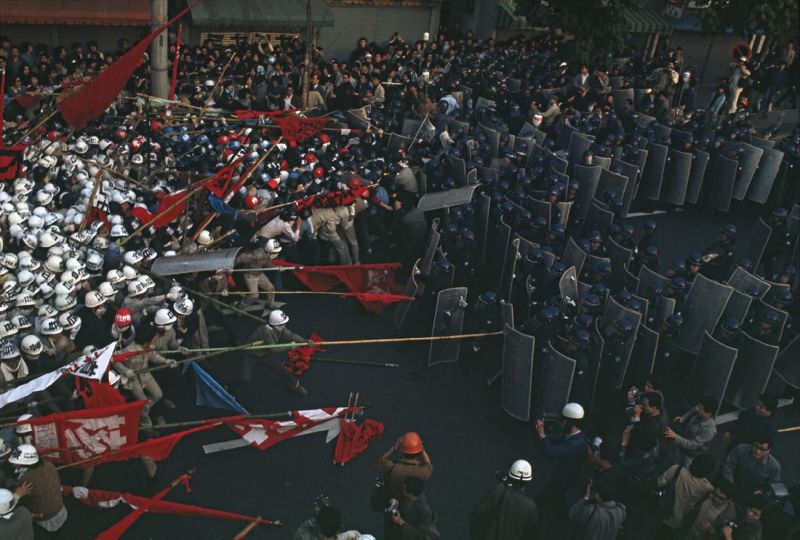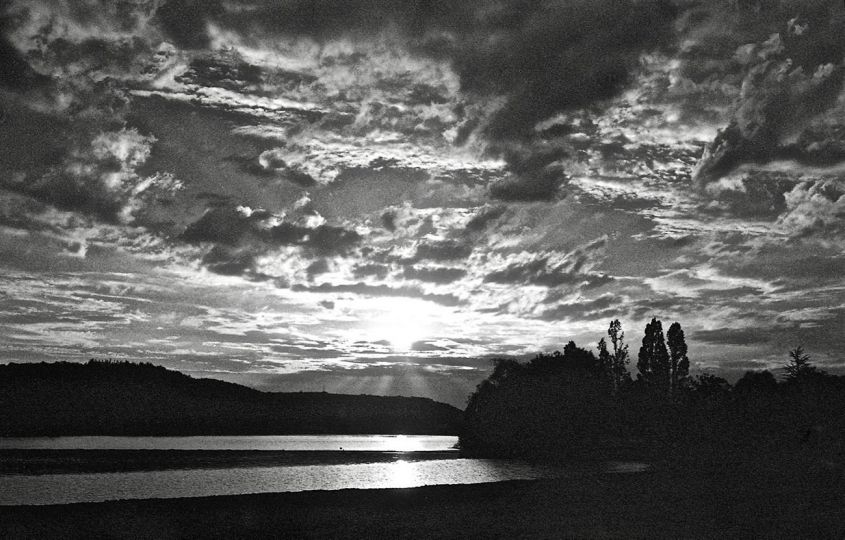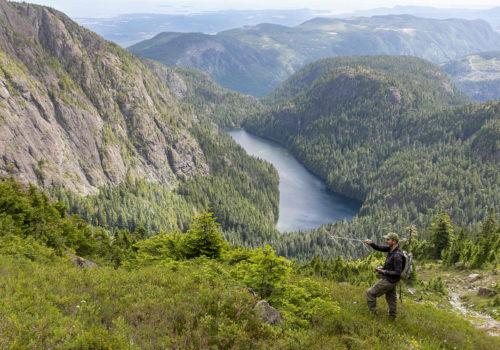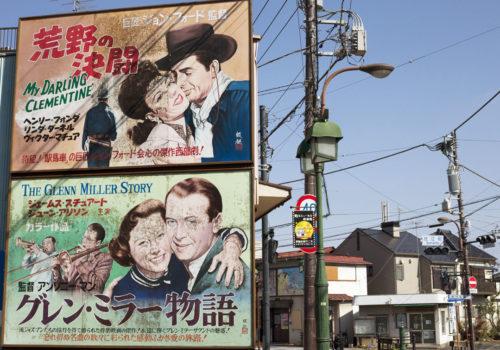Don’t they say the north wind brings change?
Its cold breath announces the new season, the onset of autumn and the end of warm days. Some await the change in weather with trepidation, the adventurous ready to set out after the heat and the lull of summer. For others, the cold wind signifies the end of good weather, of a light and carefree time. Isn’t “dolce vita” a concept originating in the South after all?
The northern wind with its melancholy moods weighs heavy on sensitive minds. Bright days give way to darkness; the shadows loom ever larger, effectively governing the rhythm of nature and humans for many long months.
What about the northern lands? Does their landscape reflect the face of this dreaded wind? In every good story, does not the wandering protagonist turn towards the North to orient themselves and find their way again? This statement is perfectly opposed to the romantic feeling of entropy that sets in with the falling of the first leaves. Such is the ambiguous reputation of the roaming wind with its chilly breath. The optimistic counterpoint defends itself, just as the pessimistic position has its fans. So what is the conclusion? Is the North perhaps a source of contrasts and contradictions?
But what are these confused thoughts going off in all directions?
Does the North have a geographic definition? It must have a beginning and an end? The place that comes closest to the strict definition of the term is the Arctic. But standing in the Arctic territory, your gaze must inevitably turn south. Does that mean the North is an invention of southern people? Seeing as they are the ones who can look north? This relativity causes confusion.
Only a dose of humour can calm these troubled thoughts. The viewer ought to simply turn their gaze in said cardinal direction and new perspectives will impose themselves. In this context, they all come from the NORTH.
A. Meyer / Clervaux – cité de l’image
Jeroen Hofman : ZEELAND
From the Luxembourgish vantage point, “the North” – provided it doesn’t begin within its own borders – is only three hours away by car.
“Zeeland” is a popular holiday destination in general. People from various nationalities gather here, at the edge of the North Sea. The coastline still shows so-called natural traces within the cultural landscape, meaning that this land was shaped by two forces, nature and humankind.
This is a multifaceted landscape: harsh, raw, fine, empty, and seemingly endless. This region, which Jeroen Hofman visually describes, represents a bridge between the past and the current era. Its history is reflected in the waves breaking on the sand of its vast beaches. The flat strips of open land reaching all the way to the horizon set a very particular scene for the northern light. A characteristic light depicted perfectly by the 17th century Dutch painters.
The current face of the same landscape is marked by ingenious solutions of creative and motivated individuals defying the seasons and the tides to demand compensation from the soil for what the sea has always and continues to reclaim.
The constant confrontation of these opposing forces is barely visible in the visual harmony of the panoramas. All tension and divergences seem to fade under the colourful spectacle of grey clouds and wide blue skies. But a strong impression remains, a light saltiness of the tongue, caused by the wind coming from the NORTH.
A. Meyer / Clervaux – cité de l’image
Jeroen Hofman ZEELAND
Arcades II, Montée de l’Église 16/09/2020 – 15/09/2021
Christian Aschman : ÉTAT DES LIEUX, ÉTATS D’UN LIEU ; CLERVAUX
Clervaux is in the north of Luxembourg. The name designates both a town and a municipality. In terms of area, Clervaux is about the second largest municipality in the country. By population numbers, however, it is far less dense than other municipalities further south. This is explained by its very rural geographic situation.
Nowadays, rural areas tend to be underestimated and reduced to simple, agricultural stereotypes. But the rural regions of Luxembourg are part of a political strategy promoted at the national level, with a focus on quality of life, culture, tourism, agriculture, industry and heritage preservation…
Here you can find features from the most diverse eras side by side. Tradition and progress overlap. Layers of history remain as visible witnesses of the past. The evolution of the cultural landscape is just as evident as in the urban centres. Perhaps with the difference that the old does not always have to make way for the new?
Christian Aschman has observed these changes over a year. His images show nested compositions of urbanist activity. Strong contrasts, harmonious coexistence, audacious additions, functional templates and pastoral constructions. Christian Aschman draws the picture of a community, without ever showing a human figure.
And yet, highly individual and full of character. The North.
A. Meyer / Clervaux – cité de l’image
Christian Aschman
ÉTAT DES LIEUX, ÉTATS D’UN LIEU; CLERVAUX
Arcades I, Grand-rue 25/09/2020 – 24/09/2021
PaoloVerzone : ARCTIC ZERO
Svalbard is an archipelago in the Arctic Ocean. Its territory is tied to Norway, but as a demilitarised zone it has a neutral status. The name “Svalbard” in Norwegian denotes a “cool coast”, which seems somewhat of an understatement, as the average temperature lies around -6 ° C.
Not every story has its origin in the thousand roots of the Orient. Some come to us from the northern reaches; their intensity and tension can easily keep up with their famous cousins from the East.
This northern archipelago offers the potential of every fantastical story, its soil inhabited by a surprising diversity of species. Its landscapes are rich on the surface as well as underground – a mixed blessing for sure, as they were too often considered with specific interests in mind, purely in terms of their profitability from a human or economic standpoint.
But the story of this place has just begun. We recall the polar expeditions from the early 20th century with legends such as Roald Amundsen. Ny-Ålesund, the most populous locality on Svalbard, has left its mark in the mining world.
These days, Svalbard is a playing field for around a dozen different nations seeking to stake their claim in scientific research. Their goals and motivations go off in all four cardinal directions; the area is marked by contrasts and opposition. From natural reserve with limited access to take-off area for scientific rockets, the archipelago is tightly bound to our specific epoch and subject to the rhythms of our time.
The next chapter of this story remains to be written.
A. Meyer / Clervaux – cité de l’image
PaoloVerzone : ARCTIC ZERO
Echappée Belle, Place du Marché 25/09/2020 – 24/09/2021
Evgenia Arbugaeva : MAMMOTH HUNTERS
The Russian Republic of Sakha in north-eastern Siberia, also known as Yakutia, is the setting to a story worthy of Jules Verne.
Due to global warming, the permafrost in the region is melting – a phenomenon with yet unknown geological and climactic consequences for the planet, but a fascinating window into the past for historians and biologists. The soil is releasing what it has been preserving for 4000 years: the remains of the woolly mammoth.
This has turned some of the population around the New Siberian Islands to a strange new source of income: they have become mammoth hunters. Like the American gold prospectors in the19th century, the hunters are facing tough conditions on their digs. They often spend months isolated on the islands. The rush on mammoth teeth is particularly popular in China. The material is processed skilfully and sold at exorbitant prices.
Evgenia Arbugaeva accompanied a mammoth hunter, trawling the icy Siberian tundra for up to 18 hours a day. Securing a tusk can take 24 hours of uninterrupted digging. The resulting photographs show surreal scenes: inevitably, the meeting of past and present carries a certain drama. But the stuff dreams are made of comes at a cost. The hunt demands severe sacrifices, separates families, leaves physical scars and pushes everyone involved to their limits. These traces of history are converted into new, material currencies. They secure livelihoods and give answers to scientific questions. Artisanal skills lend new shine to the ivory fossils. But sadly, the resurrection of their woolly ancestors offers no respite to living elephants: the demand for their tusks continues uninterrupted.
A. Meyer, Clervaux – cité de l’image
Evgenia Arbugaeva MAMMOTH HUNTERS
Jardin du Bra’haus II, Montée du Château 23/10/2020 – 22/10/2021

